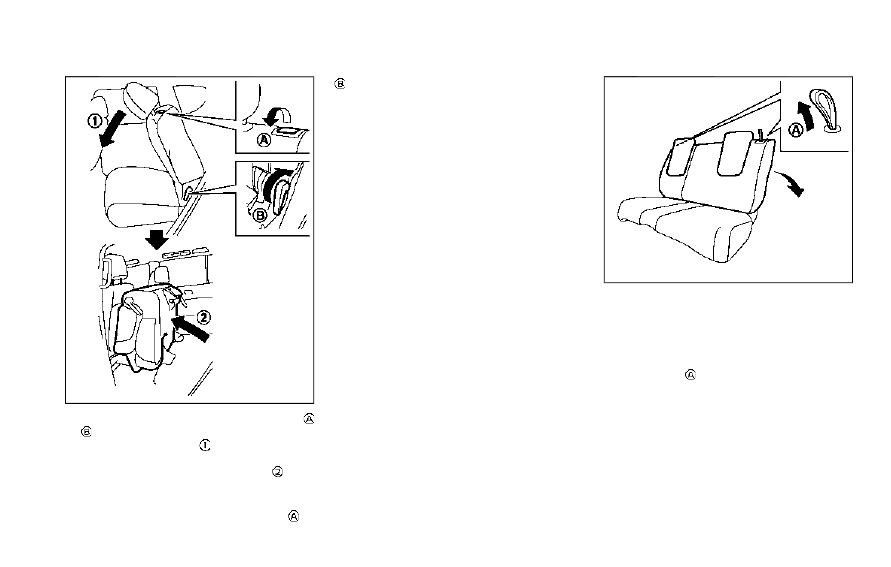Nissan Armada (2022 year). Manual in english - page 2

SSS1066
To enter the 3rd row seat, pull the lever
or
located on the 2nd row seat and fold
the seatback forward
at an angle over
the seat base. Then lift up the seat base
and tip the 2nd row seat forward
. This
will release the back of the seat so it may
be tipped forward.
To exit the 3rd row seat, pull the lever
or
and fold the seatback forward onto the
seat base. Then lift up on the seat base
and tip it forward.
SSS1068
3RD ROW SEATS
Manual seat adjustment (if so
equipped)
Reclining:
Pull the strap
and position the seatback
at the desired angle. Release the strap
after positioning the seat at the desired
angle.
The reclining feature allows adjustment
of the seatback for occupants of different
sizes to help obtain proper seat belt fit.
(See “Precautions on child restraints” (P.1-
33).) The seatback may also be reclined to
allow occupants to rest when the vehicle
is parked.
Safety — seats, seat belts and supplemental restraint system
1-7